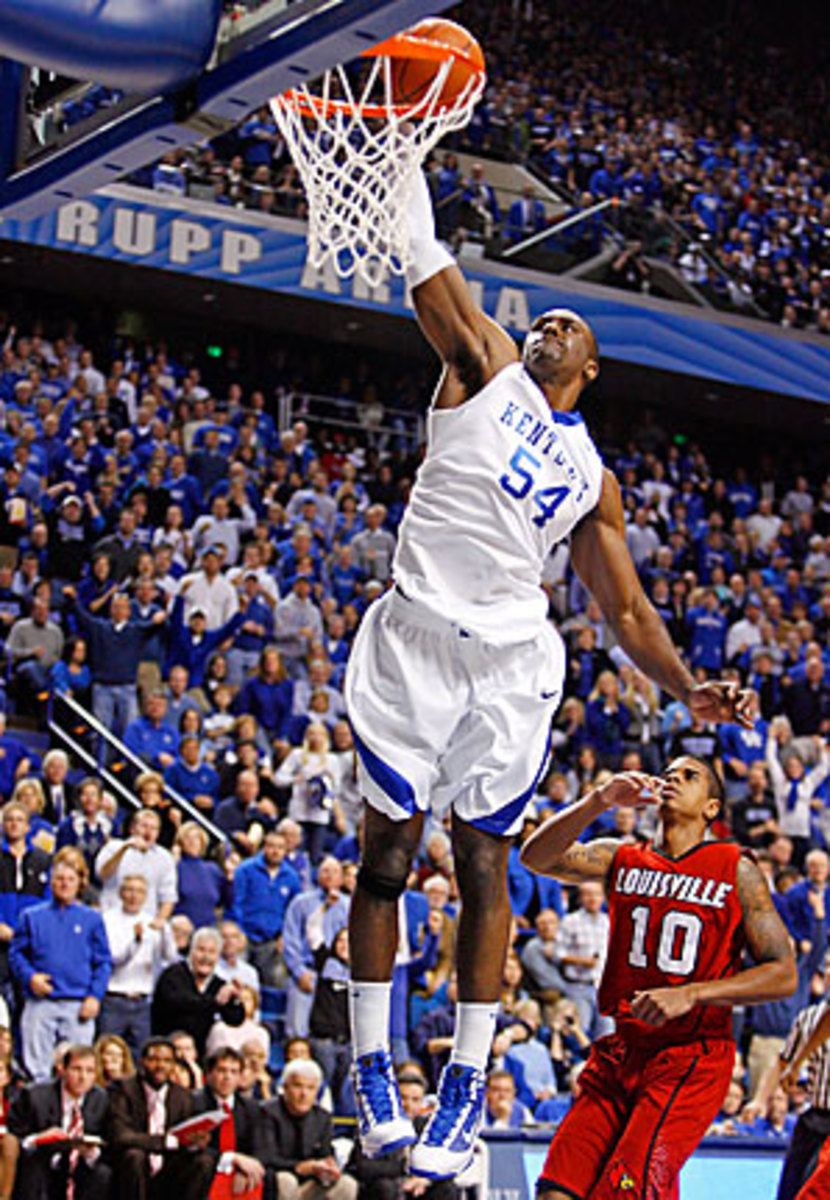
New NCAA early-entry rule leaves prospects, NBA teams in the dark
This year more than ever, NBA teams are finding their evaluation of draft prospects more congested. And over the next month it will only get worse, thanks to a new NCAA rule for early-entry candidates.
In previous years, candidates could submit their names and go through pre-draft camps and individual workouts with organizations before making a decision. In doing so, they could get more-informed opinions about whether they should stay in the draft pool or return to school for another season of conditioning and growth at the NCAA level.
But now, early entries must decide by Saturday -- more than a month earlier than when they would have had to decide in past years. And though the NBA is keeping its deadline in place, which allows all players up until 10 days before the June 24 draft to withdraw, the NCAA's new deadline renders the pro league's date meaningless for college players. International players, however, still have until June 14 to make a decision.
The NCAA's reasoning for cutting out the showcasing and evaluation process? The extra time was wreaking havoc on high school recruiting. In short, if a team's top player opted to return for another year, a coach would recruit differently than if that person had entered the draft.
Of the 74 players who came out early last April, 35 returned to school for another year, including Kentucky's Patrick Patterson, who is expected to be a lottery pick in this year's draft. Usually, up to about half of the players who declare early return to school. But the feeling among NBA personnel decision-makers is that, of the 80 players who declared for early entry this year, most will stay in the draft.
"It is all about the expectation about where a guy wants to get picked," one NBA executive told SI.com. "If they want to get picked higher, then they should go back to college."
Players have to take their chances, because the input they get from NBA personnel evaluators is much more limited. But another reason league executives think the current list will remain mostly unchanged by Saturday is because of a possible lockout after next year, which could result in a less-advantageous rookie pay scale.
"You know the old adage: 'I may not be ready for the NBA, but I'm ready for the draft,' " another executive said. "If everybody thinks the rookie scale is going to change, then parents, agents and friends all are going to be telling these guys to stay in the draft."
On the other hand, one personnel evaluator said, some players could view the potential lockout as another opportunity. Rather than declaring for the draft this year and have to sit out next year in the event of a lockout, younger players who have not lost their draft eligibility could go overseas, like Milwaukee's Brandon Jennings did. They could earn a year of salary until the NBA figures out its labor issues, and then be eligible for the draft the following year.
But NBA executives are becoming increasingly frustrated by the limited access to players. In the past, all players would participate in pre-draft camps to give scouts a better idea of whose skill set and potential best fit their teams' needs. Player agents would then, if necessary, advise players to pull out, either for fear of injury or because they could only hurt their chances at being picked higher.
Now, the pre-draft camp in Orlando, in which the lower-level players would play two days of five-on-five games, has been abandoned, replaced by players going through low-intensity drills at a private gym in Chicago, then being subjected to interviews by the teams who are on hand.
"With the new rules, people have to adjust a little bit because your exposure is less and it may be put more weight on the overall body of work," an Eastern Conference executive said.
Another exec said he could see a time coming where teams eliminate the individual workouts that follow the camp in Chicago, in part because the information obtained is not really worth the expense. Players are flying all over the country for a month, and usually they are so exhausted they can't put forth their best efforts. Teams have no control over which players come in at which times, and so there are sometimes incongruous matchups on the court.
And sometimes, the workouts don't translate. Vladimir Radmanovic had one of the best workouts anyone had ever seen, prompting Seattle's then-owner, Howard Schultz, to demand on the spot that Radmanovic be drafted by the Sonics. Radmanovic's career has since devolved into that of an average role player.
A poll of talent evaluators suggests there seems to be a consensus of who will round out the top 10 in this year's draft, but not the order in which they'll be picked -- something that will be more well-defined after the May 18 draft lottery determines the order of the top 14 selections.
Kentucky's John Wall and Ohio State's Evan Turner are widely acknowledged as the top two picks, followed, in no particular order, by Kentucky's DeMarcusCousins and Patterson, Georgia Tech's Derrick Favors, Syracuse's Wesley Johnson, Georgetown's Greg Monroe, Wake Forest's Al-Farouq Aminu, North Carolina's Ed Davis and Kansas' Cole Aldrich.
Another intriguing player is 6-foot-9 Butler forward GordonHayward, the darling of the NCAA tournament who could go in the lottery or middle of the first round.
Among international players, every scout interviewed for this story was surprised that Jan Vesely pulled out. The 6-11 forward from the Czech Republic was listed among the top 10 in several mock drafts, and his withdrawal weakens the pool of available big men.
Now, the top international prospect is 7-foot Lithuanian power forward DonatasMotiejunas. And this year, he has a clear advantage over college basketball's early-entry candidates: an extra three-and-a-half weeks to decide if he'll actually stay in the draft.





